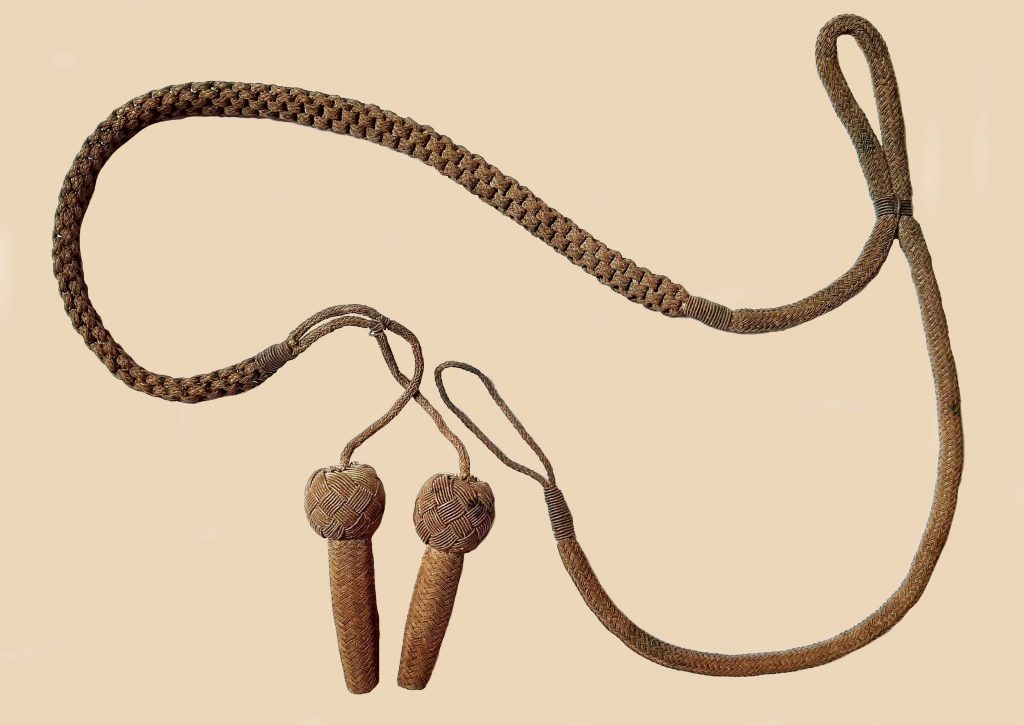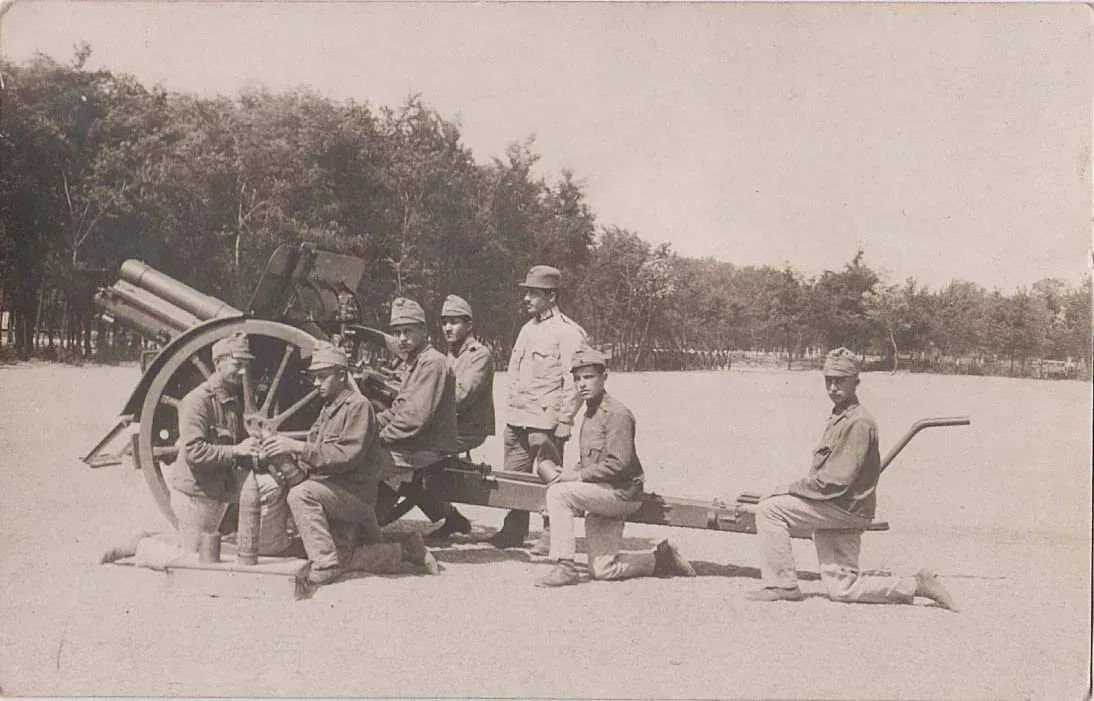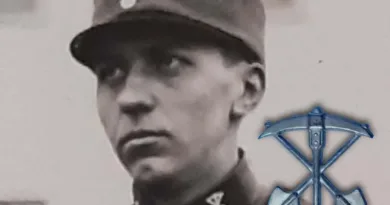Gunner lanyard awards
I would like to thank Gábor Széplaki for this second post about the Monarchy’s lanyard decorations.
The artillery guns’ handling staff consisted of seven soldiers. Their position, around the gun in firing position was as follows. On the left, the pointer kneeled directly at the gun shield. He held the rank of first class private (Vormeister). To his right, the shooter or gun operator sat on the gun support. He was the one who actually fired the gun, handled the gun’s breech. He took out the empty casing after the shot. Behind the pointer is the charger, who takes the ammunition from the two-ammunition gunners next to the gun and loads it into the gun. The munition suppliers’ job is to get the projectiles to the gun position ensuring continuous firing. At the end of the gun support kneeled the gunner handling the gun aiming handles. His task was to position/move the gun to the specified position following the pointer’s instructions. Near to the pointer kneels the gun commander, who coordinates the entire operation of the gun. His rank was a corporal or buck sergeant who was also acquainted with the skills of the pointer.
It is clear from the above that, most positions could be furnished with a less educated staff, after a sufficient amount of sledding. The pointer and gun commander tasks required special skills. It was no coincidence, therefore, that the two gunners in these positions requiring professional knowledge have been awarded a distinguishing lanyard decoration.

The Pointer Award (Vormeister-Schnur): a distinctive decoration made of 3,240 mm long wool thread 4 mm thick, which can be fastened using a very spectacular and complicated mounting method show non the next picture.
The lanyard decorations were abolished in the army of the Monarchy when the Great War broke out. It returned in the Hungarian Royal Army in 1932. In the Army Gazette No. 8, the order and description for its re-introduction appeared. The design and wearing of the decoration were identical with the predecessor.

The gun commander lanyard award: In 1910, a separate lanyard award was introduced to distinguish the gun commander (un Geschützfürer). The lanyard was prepared of golden cord with metal threaded and braided loops at both ends and in the middle, as well as two stylized acorns. The cord was 440 mm long and 5 mm thick, the loops and acorns were 60 mm long. The cord has been reinforced in many places with a thin metal wire, increasing the durability and resistance of the medal for everyday use.

Wearing: the loop above the acorns was fixed to the support ear of the round metal gunner’s medal. This badge was introduced in 1888 in the Austrian Artillery. The Honvéd artillery was established in 1913. The loop at the middle of the thicker braided braid hung on the button of the left shoulder band, while the loop at the other end was hooked to the top button of the jacket. In many cases, a signal whistle was fixed at the end of the cord. The decoration was worn both on the colorful clothing of the peace period and in the field. The appointment was given to a gunner (corporal or buck sergeant), who successfully completed the special training in addition to his qualification as gun commander. This award was also abolished in 1914 at the outbreak of the war, but remained in use until the end of the war.





